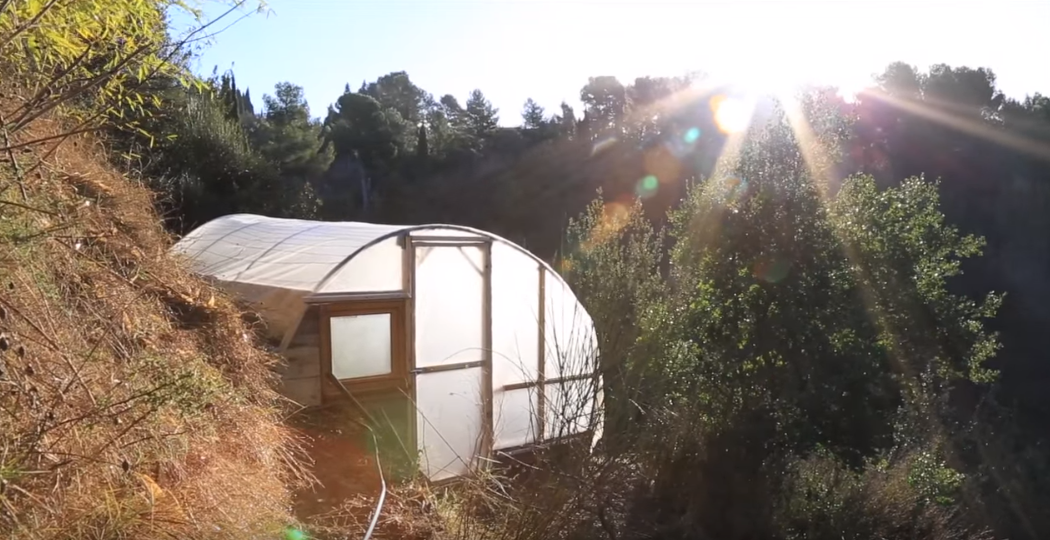In this video I show different methods that I am using to heat my newly built 16 meter square greenhouse. The main heat source being heat generated from a batch compost pile. About the greenhouse:
Some time ago I found 4 bent tubes – I put them aside for an eventual greenhouse – Since then I have been collecting things to build this green house wood (from palettes), windows, and divers bits and pieces. What i actually bought was the special uv resistant greenhouse plastic sheet and wire. This was a low cost construction.
The green house has three areas: 1- Several shelves that are made into the hill for see germination, 2- The central path, that also is used to store the water in bins, and the compost pile, 3- A planting bed. Given that the soil is rocky clay mix where I live I created this bed using the lasagna method: layers of alternate organic matter (rich in nitrogen and carbon), compost and soil.
The methods I use to keep the green house from below zero temperatures during the night include:
- Hot composting, the Berkeley method, producing high temperatures and a usable compost after about 20 days.
- Water storage, water is an excellent accumulator of thermal mass, I plan to add more water storage bins.
- Part of the green house is in the hill so this too serves as a thermal mass, accumulating the heat during the day and returning it during the night.
- The position of the greenhouse that is protected from dominant winds
- And of course during the day the sun !
The compost pile:
- The size to begin with is about 1m50 height, by 1 meter x 1 meter.
- To make this I use one bail of hay, 5 garbage bins of horse manure mix (see bellow), two garbage bins of water, I also trough into the water some manure, soil from different parts of the garden and some ash.
- The nitrogen part is a mixture of horse manure, horse urine and wood saw dust- really powerful stuff. I get this for free at a local horse stables.
- The carbon part is hay from a local source. I am given for freehay bails that have begun to decompse (perfect !)
- The pile is made and left to stand for about 4 or 5 days, during this time the internal temperature rises up to and over 60 degrees Celcius. At that point the pile is turned every 2 days about 5 or 6 times. By that time the compost pile has totally cooled and can be used in the garden. I generally let it rest for a few weeks after that and add soil to it. Then use it where I need it.
Other uses of the heat from the compost:
You may have noticed in the video that I had a few trays of planted seed pots on top of the compost pile. This also promotes fast sprouting.
Temperatures:
At the time of making the video (3rd week of February) the outside temperature were between -3 degrees Celsius at night to 12 degrees Celsius and the inside temperatures inside the green house ranged between 5 degrees Celsius at night and 45 degrees Celsius during the day!
Check it out below…
Looking for a stylish greenhouse? Check out the Greenhouse Kits here.
If you like this idea, be sure to share it with your friends and inspire someone you know. Anything becomes possible with just a little inspiration…

